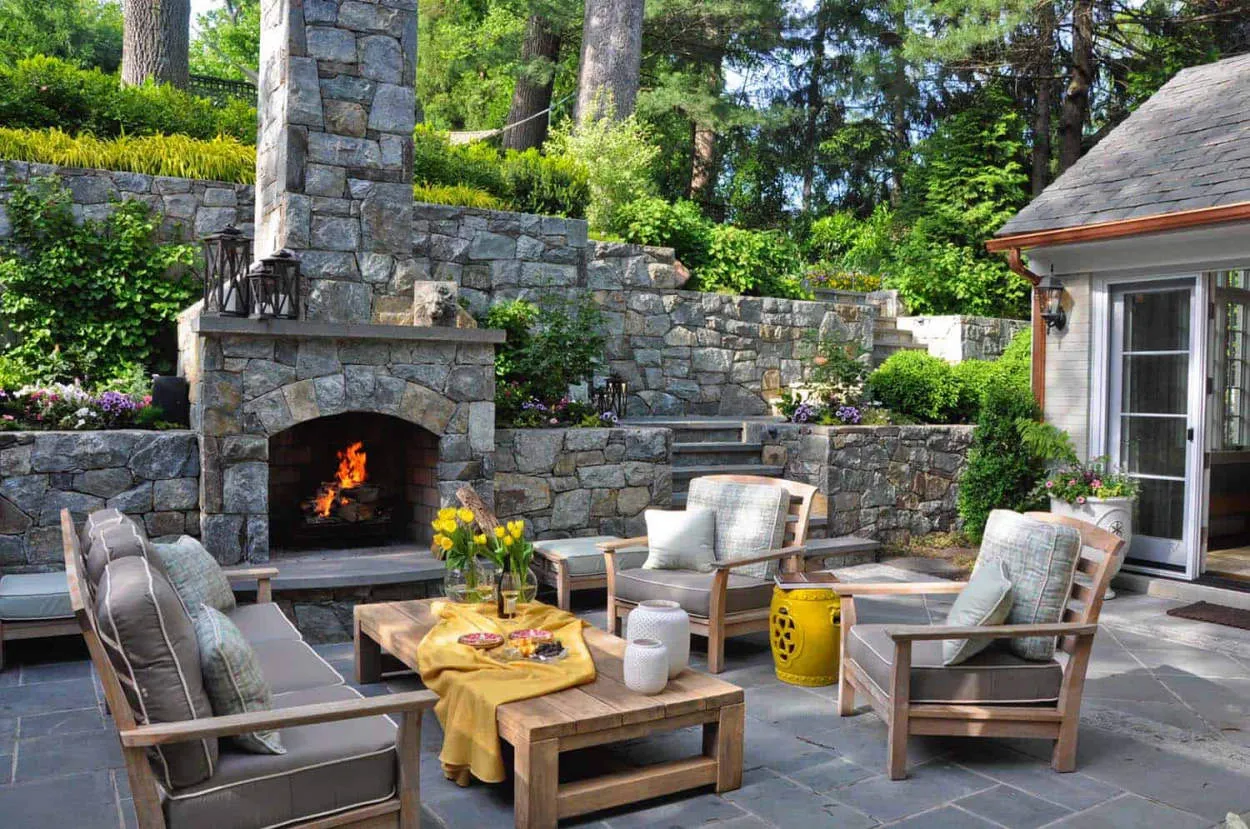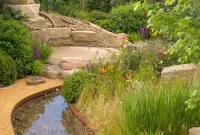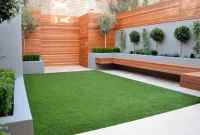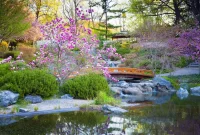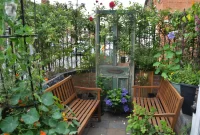A cottage garden design offers the perfect opportunity to create a cozy retreat in your outdoor space. With its quaint charm and lush greenery, this style embraces a relaxed and inviting feel. Discover how to infuse your garden with colorful blooms, meandering paths, and an ambiance that will transport you to a tranquil countryside getaway.
Defining the Cottage Garden Style
The cottage garden style is a charming and nostalgic approach to gardening that aims to create a cozy retreat in outdoor spaces. Inspired by the traditional English countryside, this style embraces a relaxed and whimsical atmosphere.
One of the defining features of a cottage garden is the abundant and diverse plantings. Flowers of various colors and types are mixed together, creating a vibrant and picturesque scene. Common cottage garden plants include roses, lavender, delphiniums, and hollyhocks.
In addition to flowers, cottage gardens often include edible plants such as herbs and vegetables. These functional elements add to the practicality and homeliness of the garden.
Another characteristic of the cottage garden style is the use of informal layouts and structures. Paths meander through the garden, leading to hidden corners and seating areas. Rustic arbors, trellises, and fences covered in climbing plants add a touch of rustic charm.
The cottage garden style also embraces a laissez-faire approach to maintenance. While the garden may appear wild and untamed, it requires careful planning and management to achieve the desired effect. Regular pruning and deadheading are essential to keep the plants healthy and encourage continuous blooming.
Overall, the cottage garden style offers a delightful mix of beauty, nostalgia, and practicality. It provides a retreat from the hustle and bustle of everyday life and allows gardeners to create a haven of serenity right in their own backyard.
Choosing the Right Mix of Flowers and Vegetables
A cottage garden is a charming and cozy retreat that combines the beauty of flowers with the practicality of growing vegetables. Creating the perfect mix of flowers and vegetables in your cottage garden can bring aesthetic appeal and provide bountiful harvests.
The Power of Flowers
Flowers are an essential element of any cottage garden. They add color, fragrance, and a sense of whimsy to the space. When selecting flowers, opt for a mix of annuals and perennials that bloom at different times throughout the growing season. This will ensure continuous bursts of beauty and keep your garden vibrant.
Consider planting classic cottage garden flowers like roses, lavender, peonies, and daisies. These varieties not only add charm but also attract pollinators, which can help increase the productivity of your vegetable plants.
Choosing the Right Vegetables
Vegetables are a practical addition to your cottage garden. They not only provide fresh, homegrown produce but also complement the overall aesthetic. When selecting vegetables, opt for ones that have attractive foliage or unique textures.
Leafy greens like Swiss chard and lettuces can add a vibrant splash of color to your garden beds. Herbs such as basil, thyme, and rosemary not only provide fresh flavors but also have aromatic foliage that adds to the garden’s sensory experience.
Creating Harmony
To create a harmonious and visually pleasing cottage garden, intermingle your flowers and vegetables throughout the space. Instead of segregating them into separate areas, mix them together in a way that complements their varying heights, colors, and textures.
Consider incorporating vertical elements like trellises or arches to support climbing plants such as cucumbers, beans, or blooming vines. This adds visual interest and maximizes the use of space.
Maintaining Balance
While it is important to strike a balance between flowers and vegetables, it is equally crucial to ensure that neither overpowers the other. Planting too many vegetables may overshadow the beauty of the flowers, while an excessive number of flowers may hinder the growth of the vegetables.
Regular maintenance, including watering, fertilizing, and pest control, is necessary to keep both your flowers and vegetables thriving. Prune your plants when needed and remove any weeds that may compete for nutrients and space.
Using Paths and Hedges
In cottage garden design, the use of paths and hedges can greatly enhance the overall aesthetics and atmosphere, creating a cozy retreat for homeowners and visitors alike.
Paths:
Paths play a crucial role in cottage garden design, as they guide visitors through the enchanting landscape. Consider using natural materials such as gravel or stepping stones to add a rustic touch. Curved paths create a sense of discovery, while straight paths can help direct attention to specific garden features.
Hedges:
Hedges are not only functional as boundaries or screens, but they also serve as decorative elements in a cottage garden. Opt for hedges made of traditional cottage garden plants such as rosemary, lavender, or boxwood. Shape them into low hedges to define borders or taller hedges for privacy. They add structure and create a sense of enclosure, enhancing the cozy and intimate feel of the garden.
Combining Paths and Hedges:
The combination of paths and hedges can create captivating garden scenes. Use hedges on either side of a winding path to create a sense of mystery and anticipation. Alternatively, a straight path flanked by neatly trimmed hedges can lead to a prominent focal point, such as a seating area or a picturesque garden shed.
Paths and hedges should harmonize with the overall style and aesthetic of the cottage garden. Consider the colors, textures, and heights of plants used to ensure a cohesive and inviting design.
Tips for a Low-Maintenance Cottage Garden
A cottage garden is a charming and picturesque addition to any home, evoking feelings of tranquility and natural beauty. However, maintaining such a garden can often be time-consuming and labor-intensive. To help you create a low-maintenance cottage garden that still exudes charm, here are some useful tips:
1. Choose native and adaptable plants
Selecting plants that are native to your region ensures they are well-suited to the local climate and require less maintenance. Opt for plants that are adaptable to various soil types and can withstand drought or excess moisture.
2. Incorporate perennial plants
Perennial plants, which come back year after year, are excellent choices for a low-maintenance garden. They require less replanting and generally have hardy characteristics, making them less susceptible to diseases and pests.
3. Create defined garden beds
To reduce weed growth and make maintenance easier, create well-defined garden beds with clear boundaries. Use edging materials such as stones or bricks to separate the planting area from walkways or other sections of your garden.
4. Mulch for weed control
Apply a layer of organic mulch, such as wood chips or shredded leaves, around your plants. Mulching helps to suppress weed growth, retain moisture, and regulate soil temperature. It also adds a neat and tidy aesthetic to your cottage garden.
5. Practice regular pruning
Trimming and pruning your plants not only encourages healthy growth but also helps to maintain a tidy appearance. Remove any dead or overgrown branches, and shape your plants to prevent them from becoming too unruly.
6. Water wisely
Install an automated irrigation system or use soaker hoses to efficiently water your cottage garden. Water deeply but infrequently to encourage deep root growth. Consider grouping plants with similar watering needs to avoid over or under-watering.
7. Attract beneficial wildlife
Invite beneficial insects, such as ladybugs and bees, by planting native flowers rich in nectar. They aid in pollination and help control unwanted pests naturally, reducing the need for chemical interventions.
8. Regular maintenance routines
Devote some time each month for routine garden maintenance. Weed your beds, deadhead flowers, and remove any decaying foliage. Regular attention will prevent small issues from escalating and keep your cottage garden looking its best.
By implementing these tips for a low-maintenance cottage garden, you can enjoy the beauty of nature without the excessive upkeep. Embrace the serenity of your cozy retreat and savor the simple pleasures it brings.
Conclusion
A cottage garden design is the perfect way to create a cozy retreat in your outdoor space. By combining a variety of flowering plants, such as roses, lavender, and hollyhocks, with whimsical elements like rustic furniture and meandering pathways, you can transform any garden into a charming oasis. Whether you have a small backyard or a sprawling lawn, the cottage garden style offers a timeless appeal that will make you feel like you’re stepping into a fairytale.

